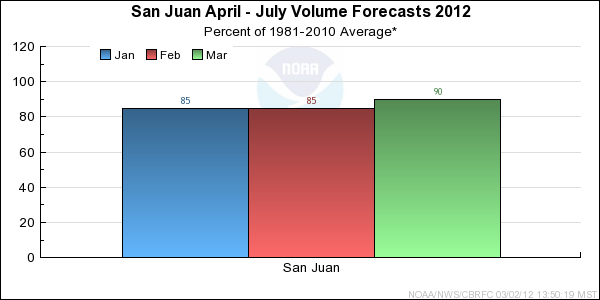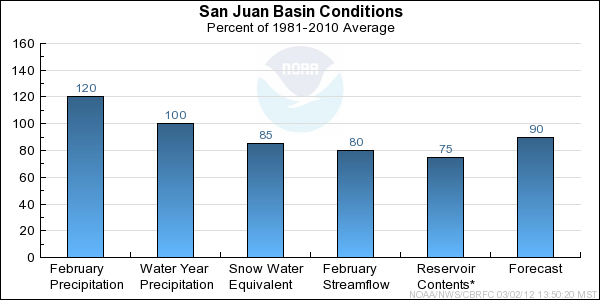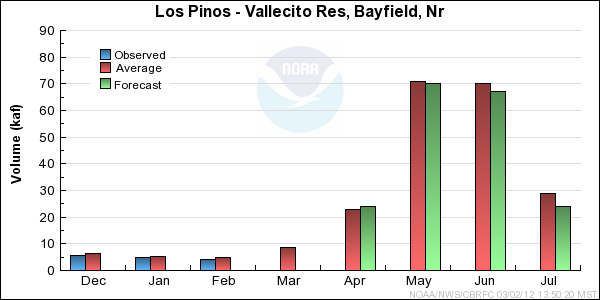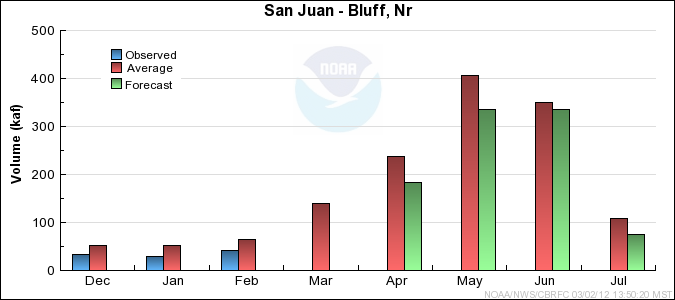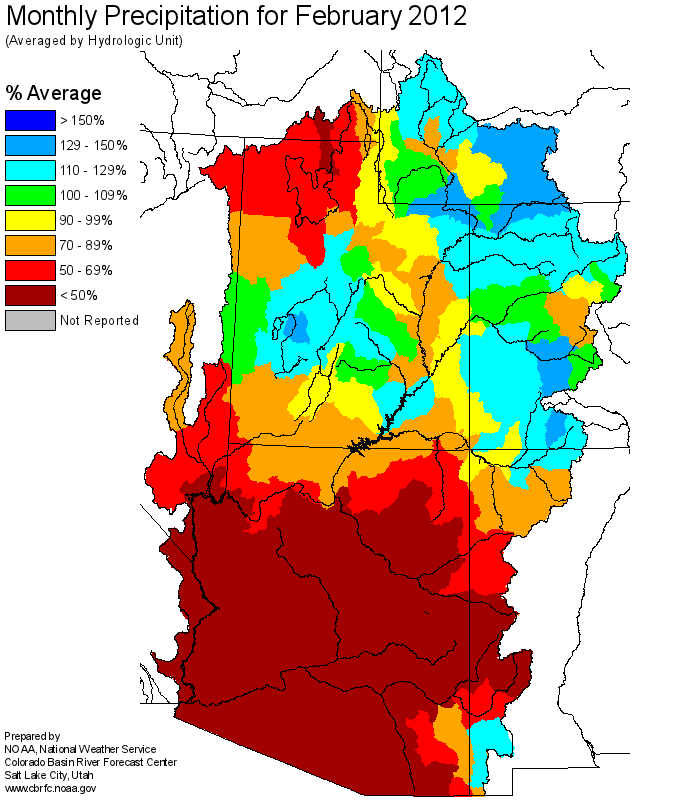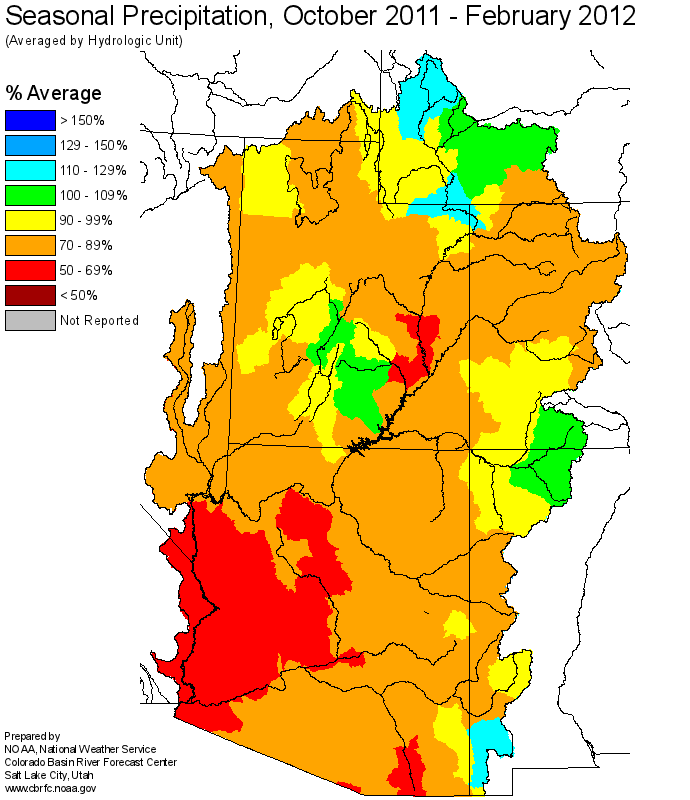The following conditions influenced this month's forecasts:
Precipitation:
Seasonal October through February
precipitation was near average in the San Juan Basin.
A wet October gave way to drier conditions November through January.
February
precipitation was much above average at most locations. The February basin average
precipitation was 120 percent of average, and ranged from 90 to 150 percent of average at individual locations.
Snow:
March 1st snow water equivalent for the entire basin was near 85 percent of average, with a few sites in the 90 to 105
percent of average range.
Animas River Basin
Snow Plot.
San Juan Basin (above Navajo Reservoir)
Snow Plot.
Streamflow:
Streamflow volumes for February ranged from 70 to 90 percent of average.
Soil Moisture:
Modeled
soil moisture was near to above
average at highest elevations entering the winter season. Below average soil moisture conditions existed
over the southern half of the basin and in tributaries further downstream.
Climate Forecasts:
La Nina climate conditions exist and a weak to moderate La Nina episode is anticipated to continue through the winter
season. The La Nina climate condition suggests drier than average conditions possible over the San Juan Basin. The
La Nina climate condition was considered when developing the forecasts.
Forecast Summary:
Seasonal precipitation is near average due to a wet October and February. Snowpack conditions improved from February
1st, with snow water equivalents ranging from 70 to 105 percent of average on March 1st. Soil moisture varied
entering the winter season, with near or slightly above average conditions in high elevations in the northern headwaters,
and below average conditions elsewhere. La Nina climate conditions suggest below average precipitation is possible over
the San Juan Basin through spring. April-July
runoff volumes are expected to range from 85 to 95
percent of the 1981-2010 average.
Differences between the full period forecasts and the residual forecasts may not exactly equal the actual observed volumes due to rounding conventions (see Definitions section).


